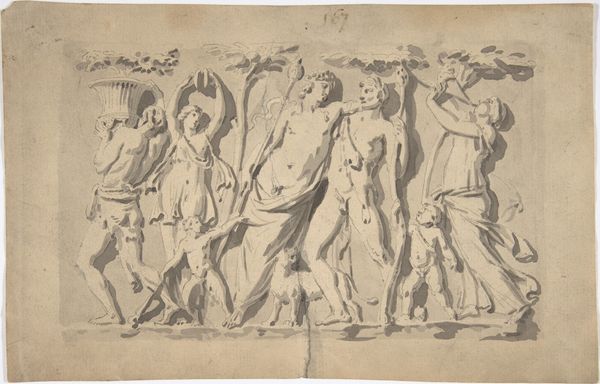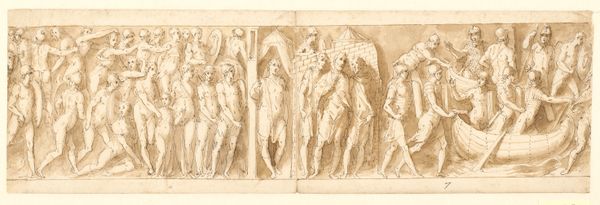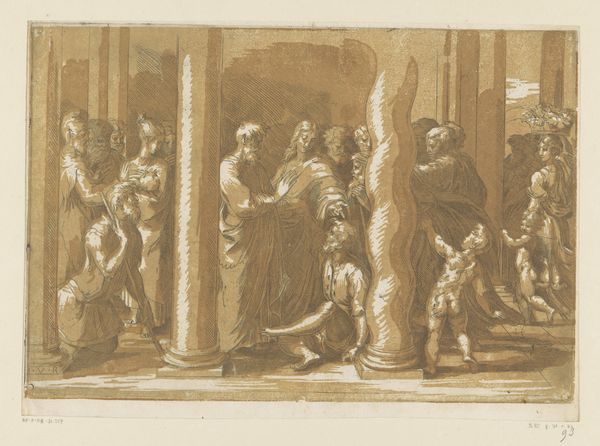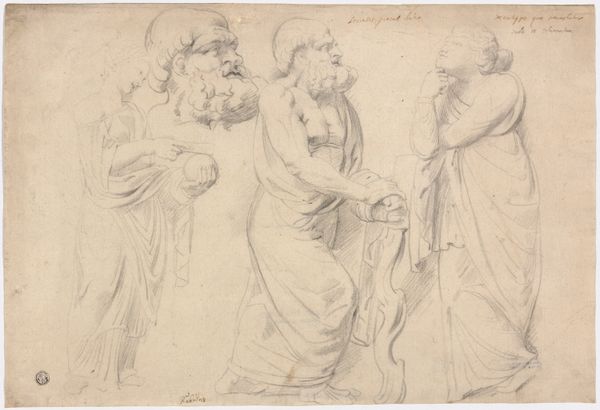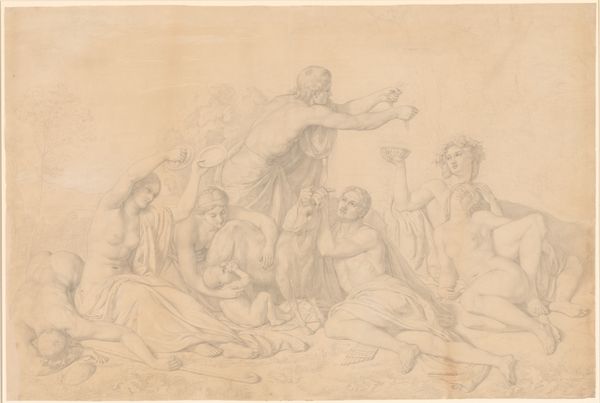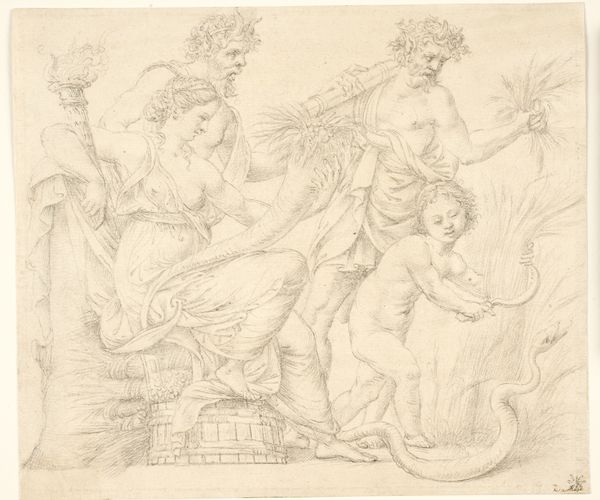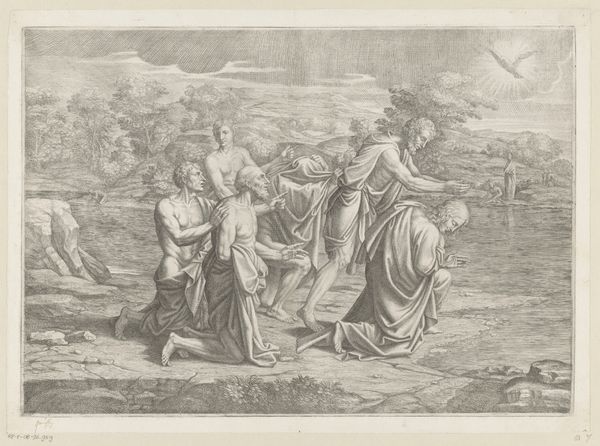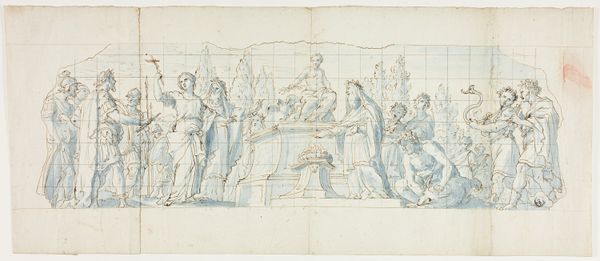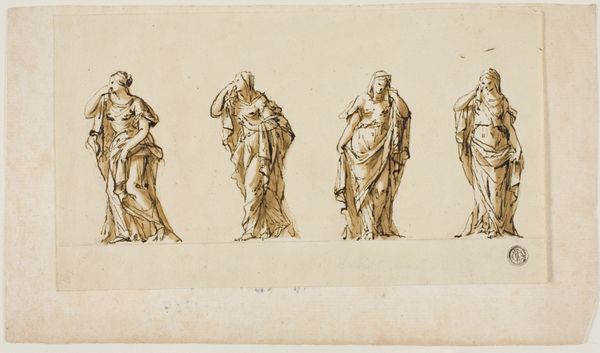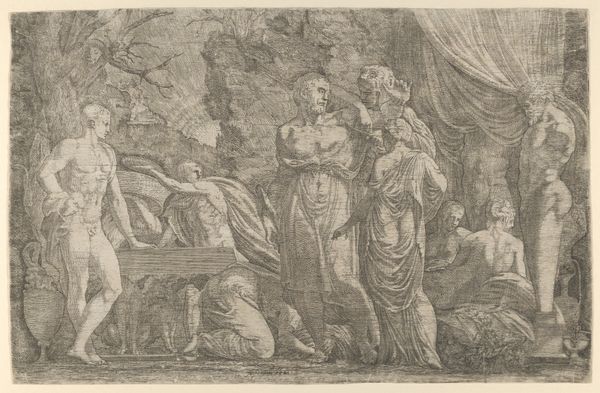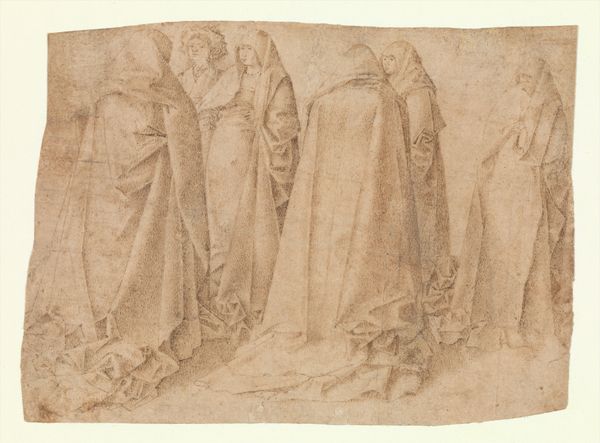
aquatint, print
#
aquatint
#
neoclacissism
#
allegory
# print
#
figuration
#
history-painting
Dimensions: 172 mm (height) x 466 mm (width) (plademaal)
Editor: This is "Nornerne," an aquatint print from 1822 by S\u00f8ren Henrik Petersen. It gives me the feeling of an ancient frieze, with all these figures lined up, but the hazy quality of the aquatint softens the severity. What stands out to you about this work? Curator: Considering Petersen's "Nornerne," the aquatint medium itself speaks volumes. Aquatint allowed for tonal gradations similar to wash drawings, popular for reproductive prints in this era. What’s often overlooked is the labor involved. Think about the repetitive acid-etching process on the copper plate; this image wasn't easily reproduced. It speaks to a market for accessible, yet finely rendered, images of historical and allegorical subjects. Neoclassicism, even in print form, served specific social functions. Editor: So you're saying the medium helped make this art movement more accessible, despite all the hard work needed to create it? Curator: Exactly! The choice of printmaking indicates a desire to circulate these ideas within a specific class. Consider the paper quality too. Was it luxurious, intended for collectors, or was it a cheaper variety, aimed at students and the burgeoning middle class? What do you notice about the depiction of the figures? Editor: They seem…idealized, almost like statues. But you’re right; you can also see the paper texture beneath. It makes it feel less…perfect. Curator: That "imperfection" is where materiality breaks through the illusion of neoclassical perfection. The handmade process betrays the ideal. Were these accessible images tools to cultivate taste or spread a particular national identity, manufactured objects embedded in a cultural project? It raises compelling questions about production and dissemination. Editor: I never considered the materials used as being quite as connected to the message. Curator: Looking closely reveals those hidden layers, moving beyond simple iconography to the very means by which these images entered society and shaped it. We both learn something.
Comments
No comments
Be the first to comment and join the conversation on the ultimate creative platform.
